Akita Dog Breed
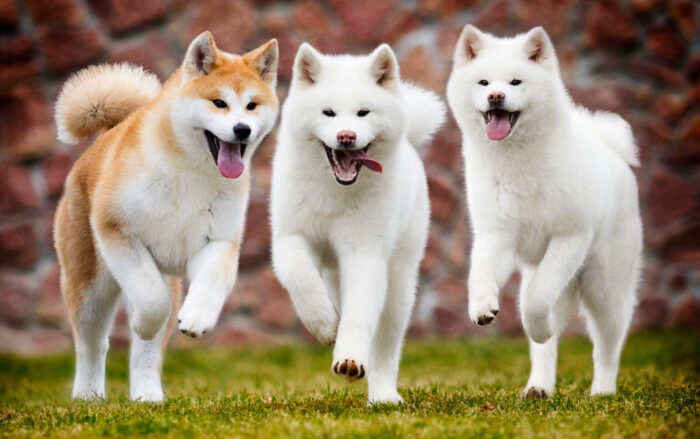
The Akita is a majestic large breed, often standing at an adult height of 26 to 28 inches, and weighing between 110 and 132 pounds. Compared to other breeds, its size is truly impressive.
This colossal size, combined with its muscular build, immediately commands attention.
While it’s frequently compared to the Shiba Inu, the Akita has longer limbs and a more muscular body.
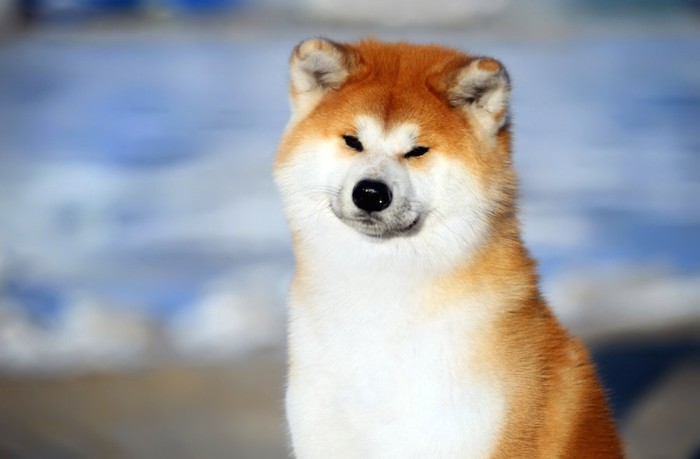
Particularly noticeable is the height of the hips, which alludes to its historical roles as a fighting and hunting dog.
The Akita also has a unique facial appearance. Its muzzle is moderately long and pointed, and its triangular upright ears are quite captivating.

Although some may have drooping ears, the upright ones enchant many. Its tail curls beautifully, a feature adored by Akita enthusiasts.
Coat Color
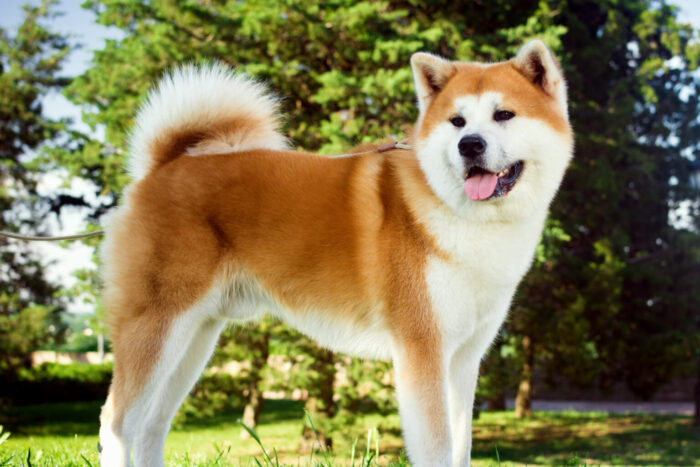
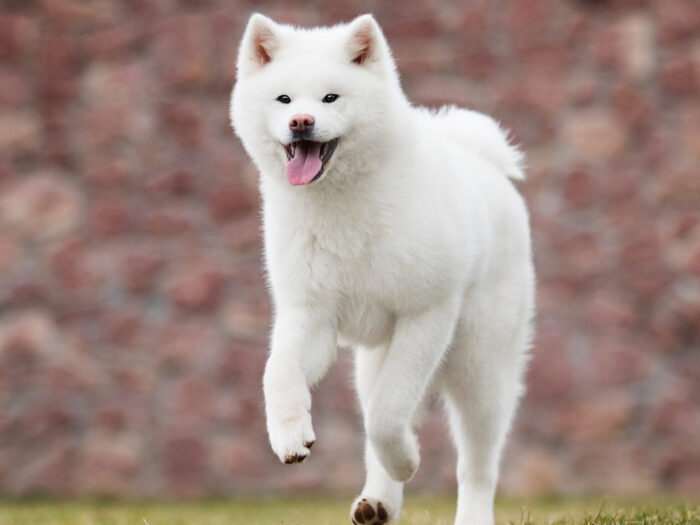
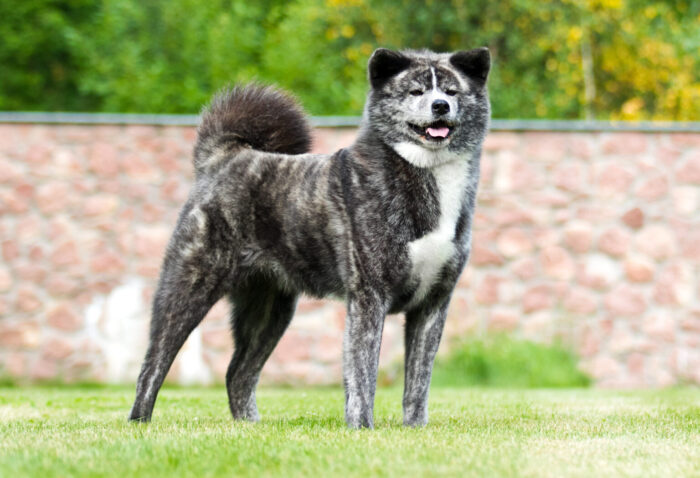
The Akita primarily has a red coat, but other variations like white, black, gray, sesame, and even tiger-striped patterns exist. The variations in tiger-striped coats are numerous, including black tiger, red tiger, black and white tiger, and brindle tiger.
A distinctive feature of the Akita is that any coat color other than white must have a white undercoat.
Coat Type
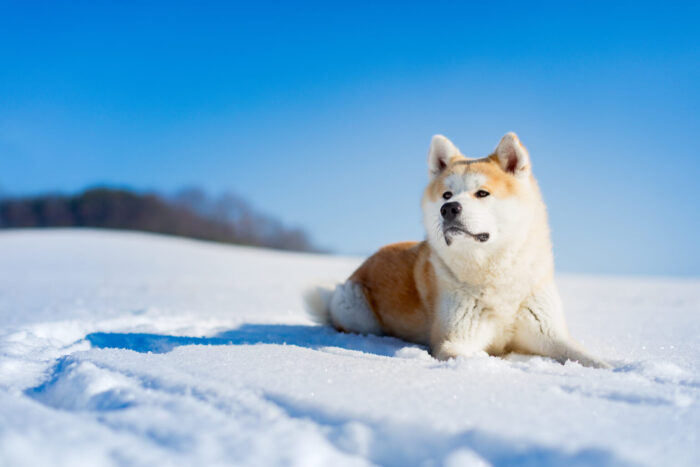
The Akita has a double coat that’s somewhat coarse, a trait thought to be because of its origins in colder climates. Though generally a short-haired breed, there are some rare long-haired specimens, referred to as “Moku” coats.
These are not considered standard by breed organizations, but their pleasant texture and fullness have made them popular.
Physical Characteristics
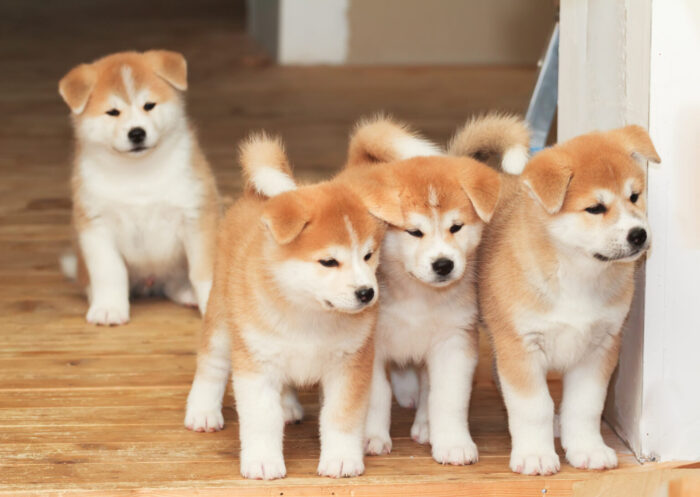
The Akita’s appearance uniquely combines strength, grace, and historical context.
Each feature stands on its own but also contributes to the overall aesthetic and robustness of the Akita, a well-balanced beauty that draws people in.
Size
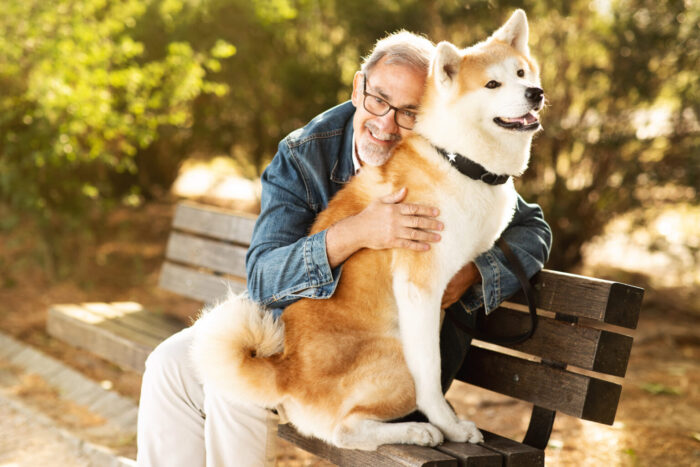
- Height: 26-28 inches
The Akita is the only large breed among Japanese dogs. With a height ranging from 26 to 28 inches, you can instantly feel its majestic size.
In a world where large breeds generally stand over 19.7 inches tall, the Akita far surpasses that standard.
It’s noteworthy that their rapid growth from just about 11 pounds at birth to 7-8 times that within a year is remarkable.
Weight
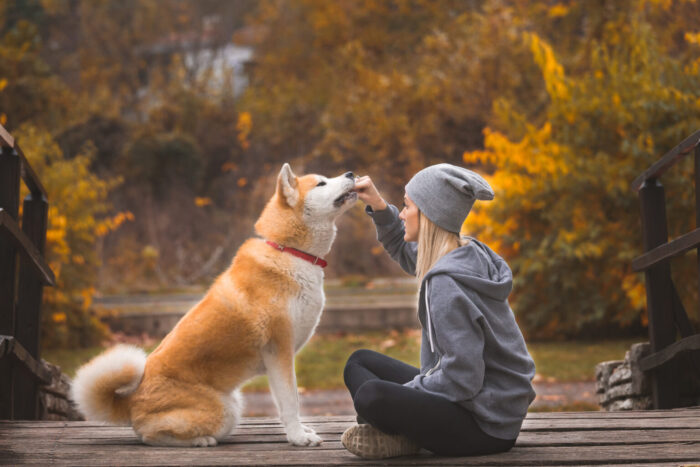
- Weight: 110-132 pounds
The Akita’s weight is commensurate with its large frame, averaging between 66 and 132 pounds, nearly rivaling a human. This weight may be a safety concern, especially if children are nearby.
However, the Akita is an extremely loyal and intelligent breed.
It grows quickly, with weight possibly increasing six to twelvefold from about 11 pounds at 2 months old.
Thus, inadequate meal management could necessitate a diet during adulthood.
Lifespan
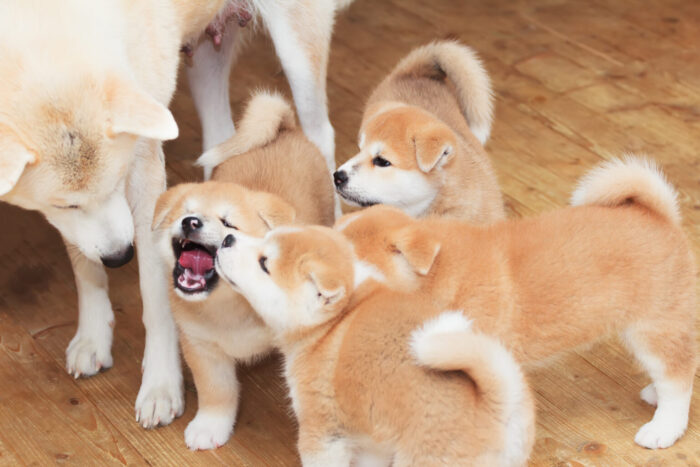
The lifespan of Akitas is generally said to be between 10 to 15 years. However, these are average figures and some can live even longer.
Several factors can influence an Akita’s lifespan, such as innate strength, resistance to illness, and how well they are taken care of day-to-day.

It is often mentioned that larger breeds like the Akita tend to have shorter lifespans compared to smaller dogs. This is because their size puts extra strain on their heart and joints.
However, this is not a strict rule and varies from dog to dog. For a longer life, daily health management is crucial.
Trainability
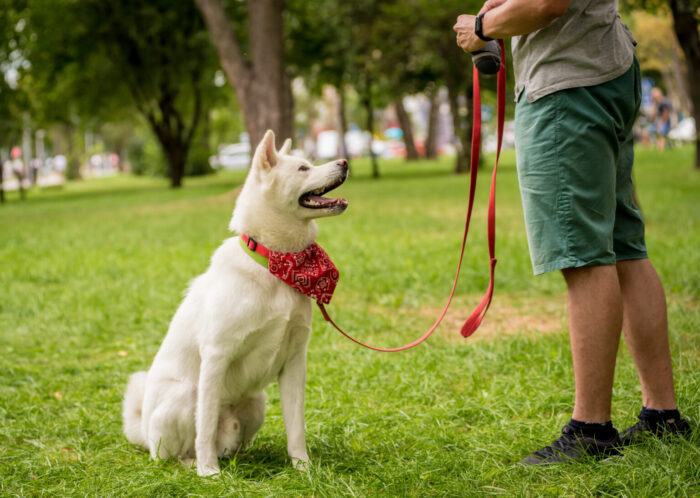
The Akita is a smart breed, known for its loyalty to its owner. However, they can also be stubborn around those who are not their owners.
Understanding this trait is crucial for successful training. The owner must exhibit strong leadership.
This can be achieved by maintaining a consistent daily schedule for walks and meals, and using commands like “Sit” and “Stay” consistently.
- If the dog barks excessively or is overly cautious around strangers, immediate action is needed. For example, as soon as you sense that the dog is about to bark, issue a “Quiet” command.
- It’s important to provide clear feedback for good and bad behavior. Reward good behavior with treats or their favorite toy, and for bad behavior, change your tone of voice and say “No.”
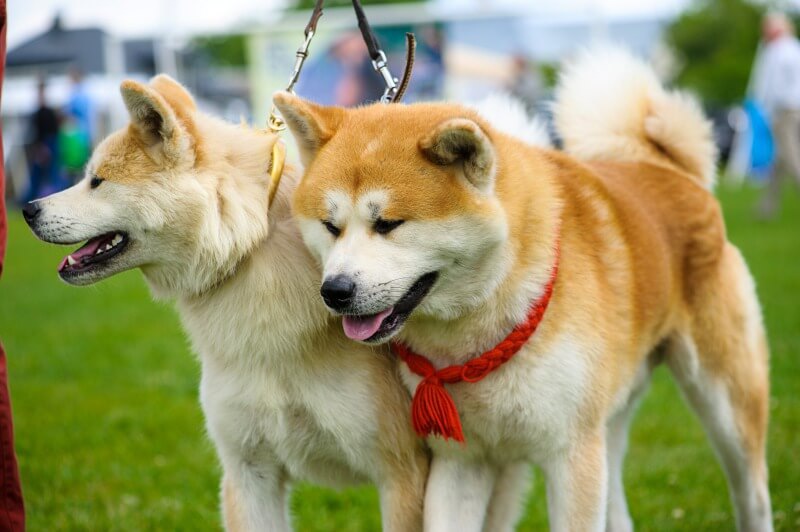
Consistent actions and clear feedback help establish trust with your Akita. Building this trust is the first step towards successful training.
Once trust is established, future training should go smoothly.
Exercise
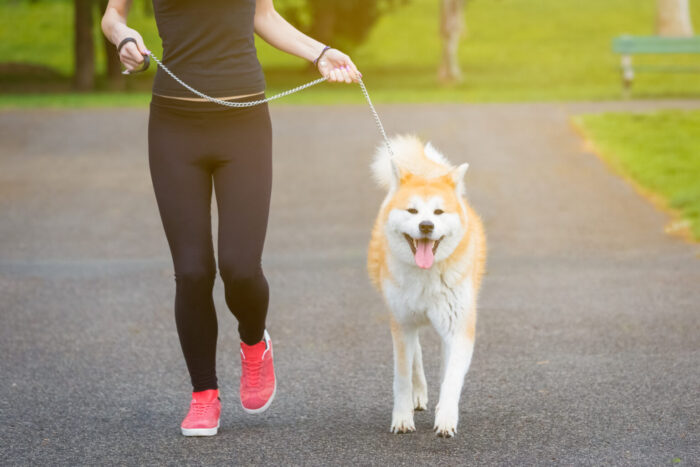
Akitas love walks and require daily exercise to satisfy their active nature.
This is especially important if you plan to keep them indoors, as walking is the only way for them to properly expend their energy.
- Generally, two walks a day, each lasting from 30 minutes to an hour, is ideal.
- Avoid walks under the hot sun, as Akitas are sensitive to heat and may suffer from heatstroke.
- For walking gear, sturdy collars or harnesses designed for large breeds are recommended. A harness is particularly suitable if your Akita tends to pull.
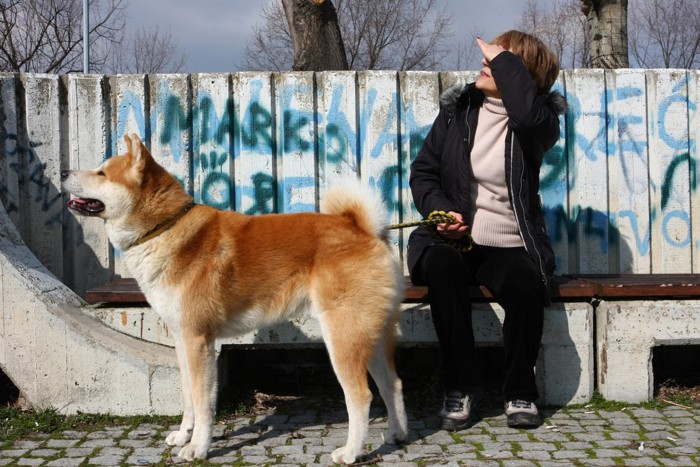
Choosing the right time and equipment for walks significantly impacts the health and happiness of your Akita.
Feeding
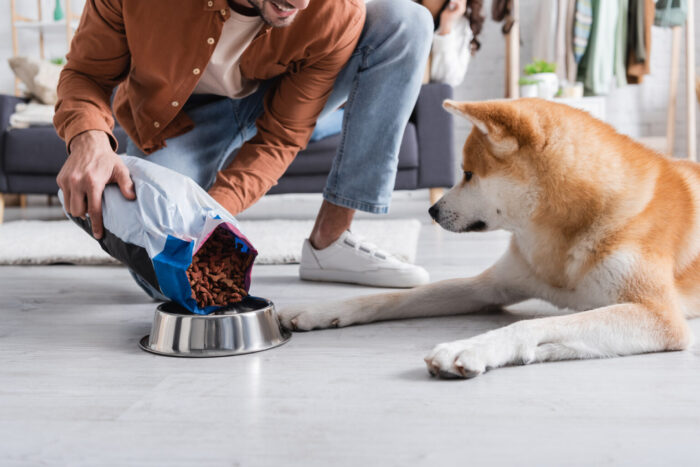
Given their large size and active temperament, Akitas require special attention when it comes to feeding.
While their food expenses may be higher than other breeds, it’s due to their higher energy expenditure and nutritional needs.
- Overfeeding can lead to obesity, which poses risks like joint pain and diabetes.
- Consult a veterinarian or a canine nutrition expert to determine the proper amount and nutritional balance for your dog.
- Choose dog food rich in high-quality proteins, good fats, and essential vitamins and minerals.
- Adult Akitas should be fed twice a day, while puppies should be fed 3-4 times a day.
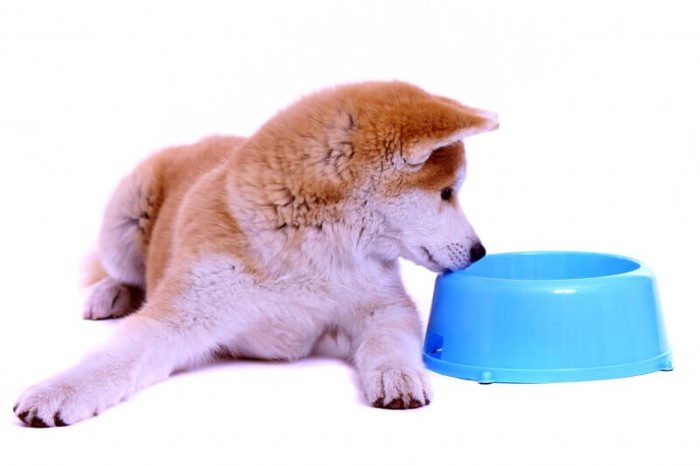
Managing an Akita’s diet requires a multi-faceted approach. Always prioritize your dog’s health and happiness when planning their meals.
Temperament
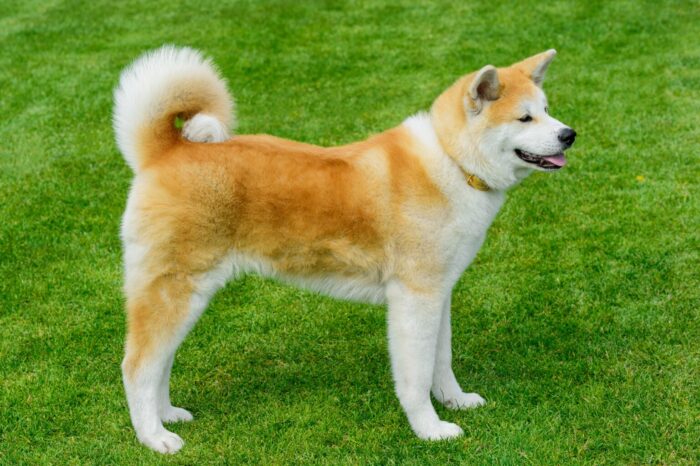
- Loyalty and Alertness: Akitas possess deep affection for their families while maintaining a high level of alertness towards strangers and unfamiliar situations.
- Sensitivity and Learning Ability: Highly perceptive and intelligent, Akitas often excel in training.
- Friendly and Calm Nature: Well-suited for home life, their tranquil temperament is reflected in their minimal tendency to bark unnecessarily.
- Dignity and Importance of Training: Akitas carry themselves with a majestic dignity; hence, a consistent and strong-willed training approach is necessary.
- Complex Emotions: At times, they may exhibit a dominant attitude toward strangers or other animals, revealing their complex emotional landscape.
The Akita breed is a bundle of loyalty, pouring unconditional love into their families. Concurrently, they are highly alert towards strangers and unfamiliar circumstances.

These dogs are both sensitive and intelligent, which generally makes training relatively easy. Their friendliness and calm nature make them ideal for home life, and they rarely engage in needless barking.
However, their dignified and multifaceted personalities require consistent and strong-willed training. They may sometimes display a dominant attitude toward unfamiliar people or animals, making robust training essential.
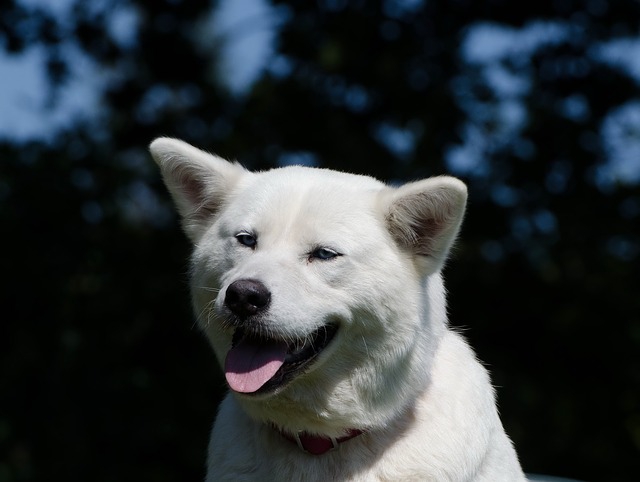
Each Akita has its own unique personality and multi-faceted character.
By understanding and lovingly interacting with all these aspects, coexistence with an Akita becomes an enriching experience.
History
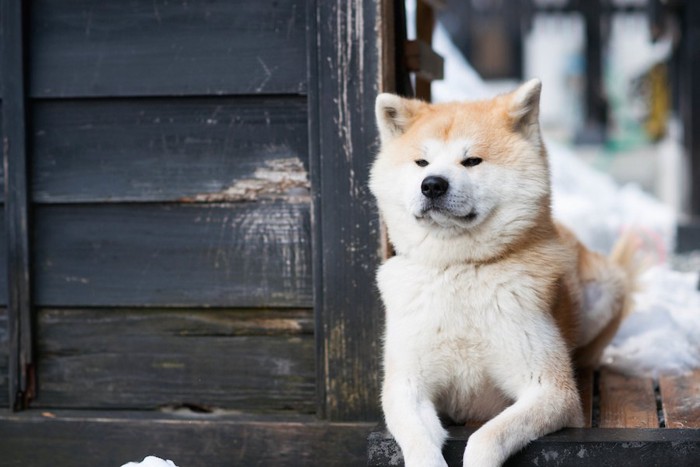
The Akita, named after Japan’s Akita Prefecture, has a history spanning over a thousand years, being depicted alongside Japanese nobles in ancient times.
Originally a hunting dog, its loyalty became famous through the story of Hachiko in the 1920s.
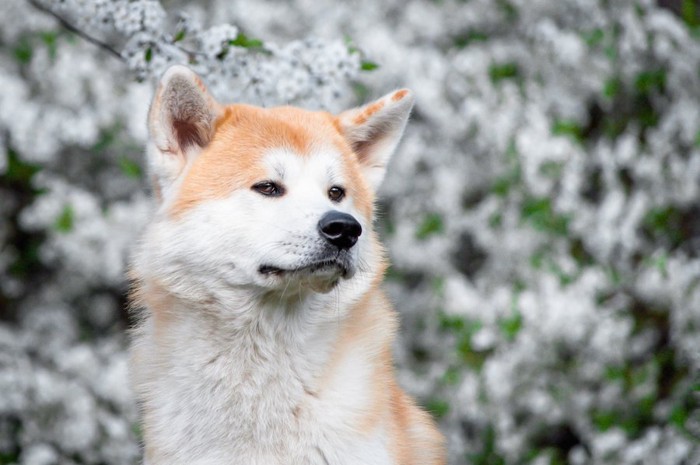
The breed faced near extinction during World War II but was revitalized, with some taken to America, leading to two strains: the Japanese Akita Inu and the American Akita.
Japan recognized the Akita as a significant part of its heritage in the 20th century.
Grooming
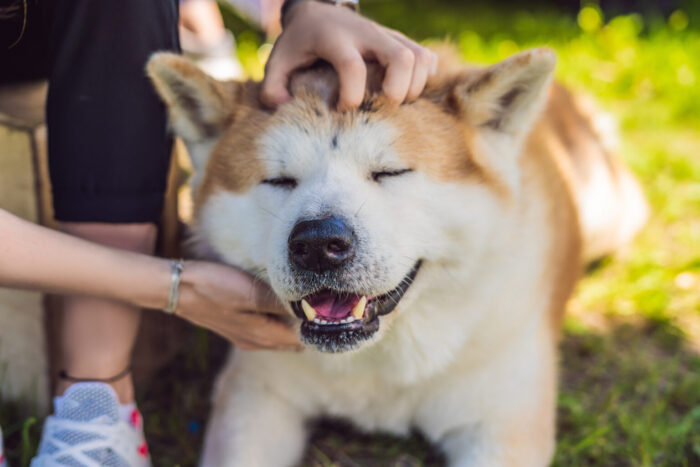
It is advisable to shampoo your dog approximately once a month. This regimen helps in maintaining clean skin and also rinses off the loose fur. However, frequent shampooing can potentially dry out the skin, so modulate as needed.
During shedding seasons, in addition to regular brushing, targeted grooming can be particularly effective.
This avoids the overwhelming task of grooming your dog all at once and ensures a stress-free experience for your pet.
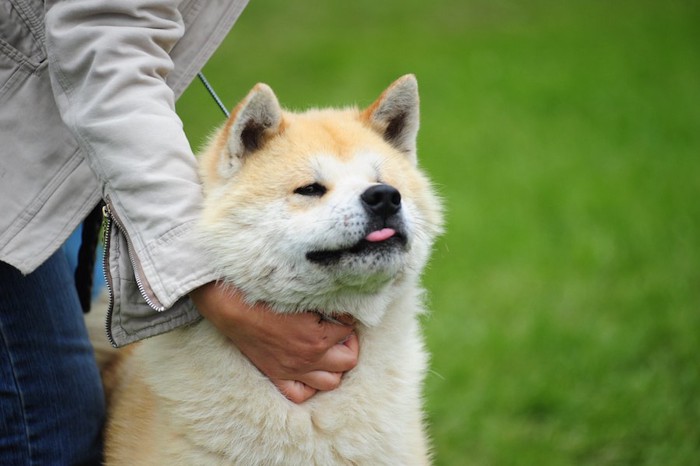
Ultimately, grooming is more than a chore; it’s an opportunity to deepen the bond between you and your dog. Engaging in frequent tactile interactions like brushing and shampooing will make your dog feel your love and enrich its emotional life.
These are the essentials for maintaining your Akita’s well-being.
Regular grooming is not only vital for keeping their coat in prime condition but also for ensuring they lead a healthy and emotionally fulfilling life.
Small, daily acts of love contribute to long-term health and happiness.
Health
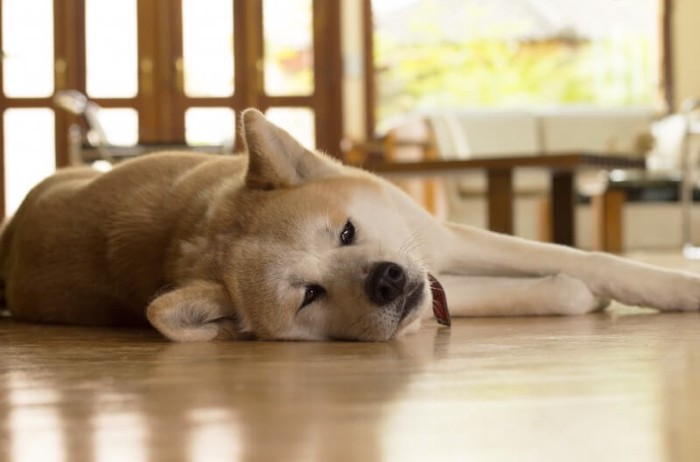
The Akita dog, a beloved breed in Japan, often comes with a predisposition towards sensitive skin, making them prone to various skin conditions.
Once affected, symptoms such as oily skin, dandruff, and hair loss become evident.
To prevent these issues, it’s essential to maintain their skin’s hygiene rigorously.
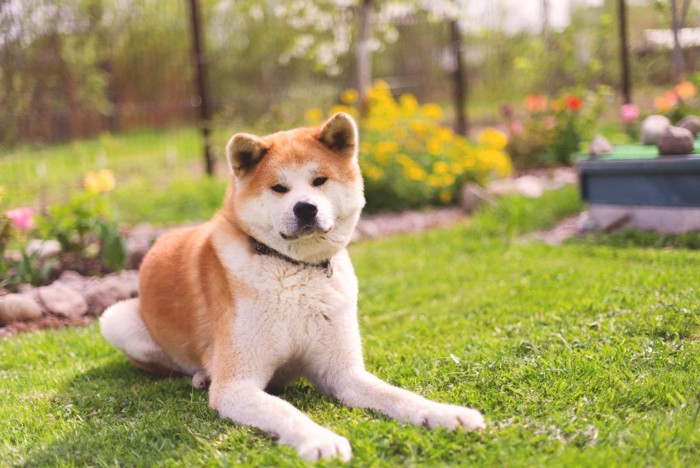
Moreover, once skin problems manifest in an Akita, they can be stubborn to treat.
What seems like a full recovery might only be a brief respite before the condition returns.
Thinking, “It’s just a minor rash; it’ll be okay!” can quickly lead to a worsening situation.
If these issues escalate, they become even harder to treat.
Therefore, if you ever notice any abnormalities in your Akita’s skin, it’s advisable to seek veterinary care without delay.

